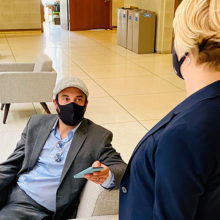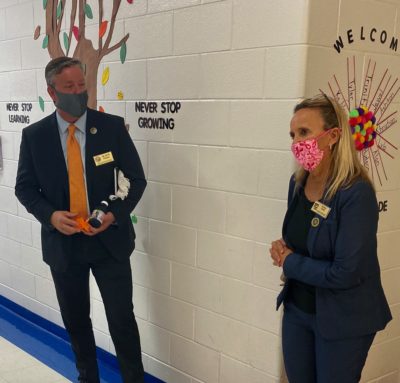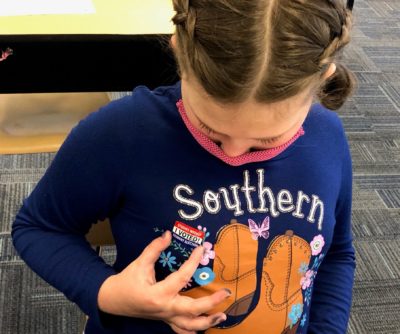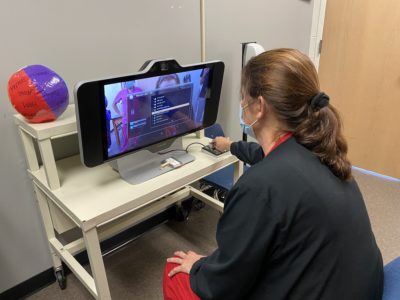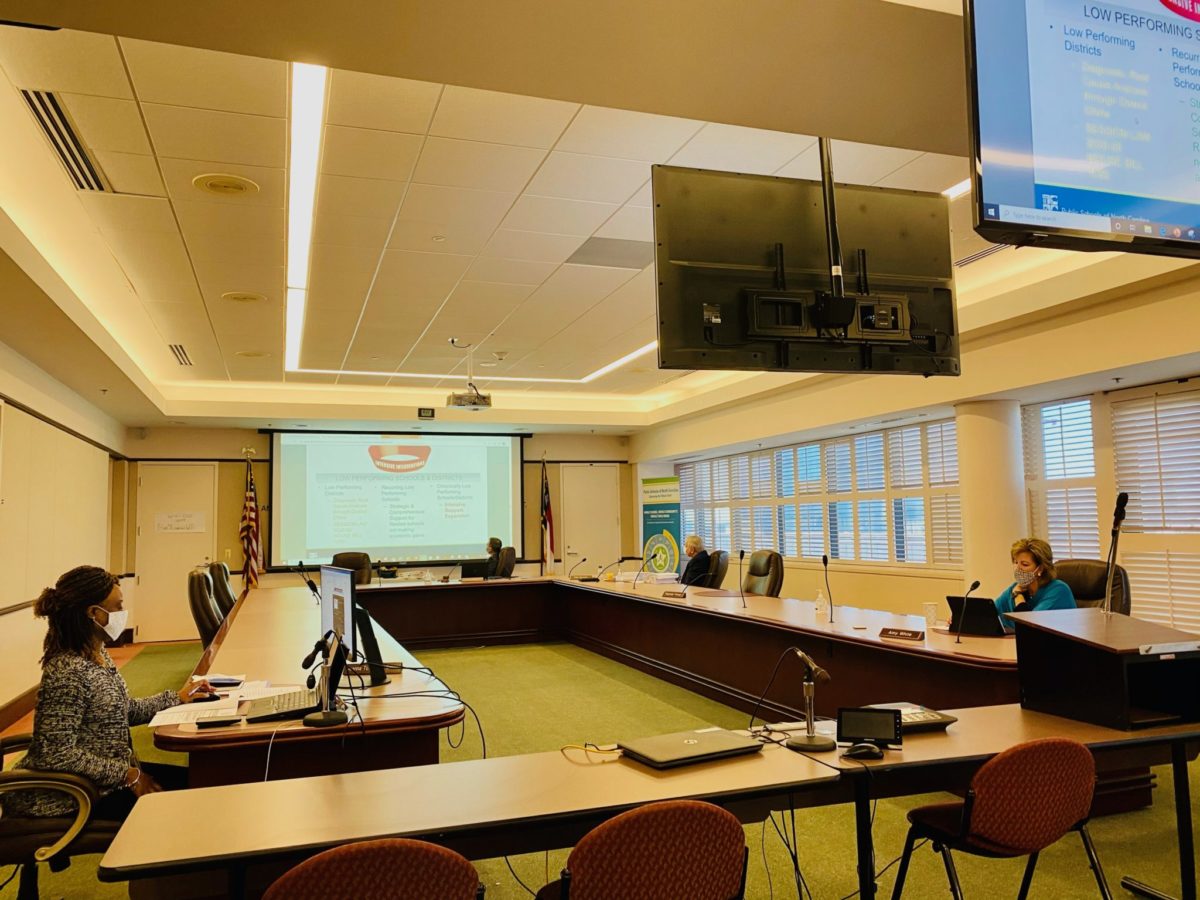

The State Board of Education heard a variety of presentations on everything from restart schools to advanced teaching roles. Here is a recap from the two-day meeting this week.
Budget priorities
The State Board heard an overview of preliminary legislative priorities for the Board and the state Department of Public Instruction (DPI) and the funding needed to achieve them. Overall, the expense of fulfilling all the Board’s preliminary budget priorities would be more than $417 million, according to the presentation.
The cost of the legislative priorities includes:
- More than $7.5 million for early grades reading
- More than $143 million for teacher preparation, professional learning, and pay
- More than $27.5 million for principal preparation, professional learning, and pay
- More than $153 million for student mental health
- Almost $45 million for school and district turnaround assistance
- More than $9 million for “Connecting High School to Postsecondary and Career Opportunities”
- More than $2 million for state Department of Public Instruction support positions
- More than $29 million for “Other Agency Budget Requests”
There is more detail in the document below:
The presentation below has more detail on the legislative priorities, including a timeline of how the State Board’s final budget requests to the General Assembly will be formed. This week’s discussion was a preliminary look at budget priorities. The final prioritized budget asks for lawmakers should be solidified by January, according to the report. The presentation below also includes information about DPI’s budget, strategic plan, and more.
Restart schools
The State Board also heard an annual report on restart schools that included information on how the school reform model is working in districts where it is used.
Restart is a program that essentially gives some charter-like flexibilities to recurring low-performing schools. There are 140 restart schools that have been approved by the State Board of Education. The report looks at the first two cohorts, which are the only two that have already entered implementation — 107 schools.
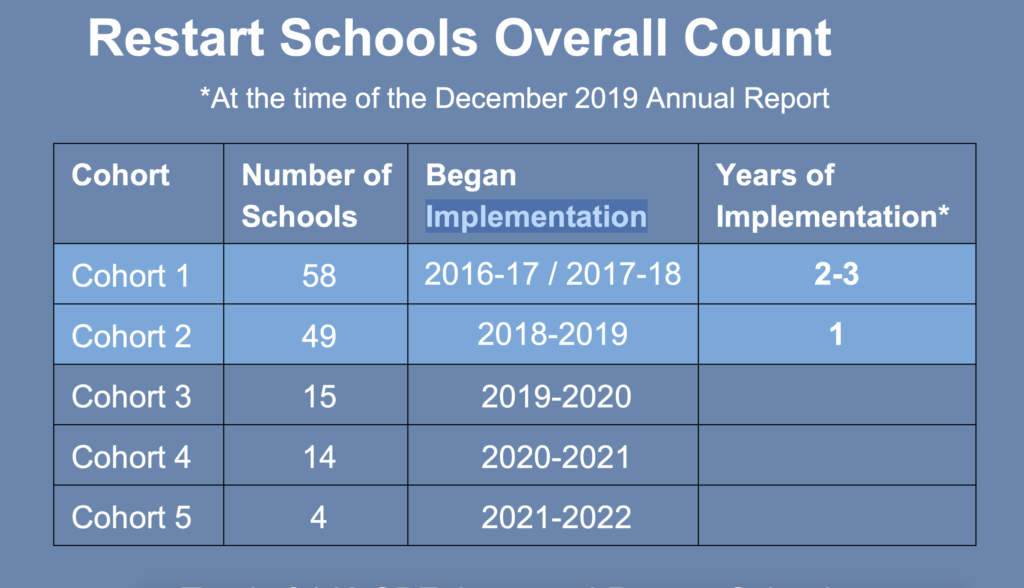

About 21 of those 107 schools are performing above expectations, having moved out of recurring low-performing status and meeting or exceeding academic growth. Another 65 schools are meeting expectations, and another 21 schools are not meeting expectations.
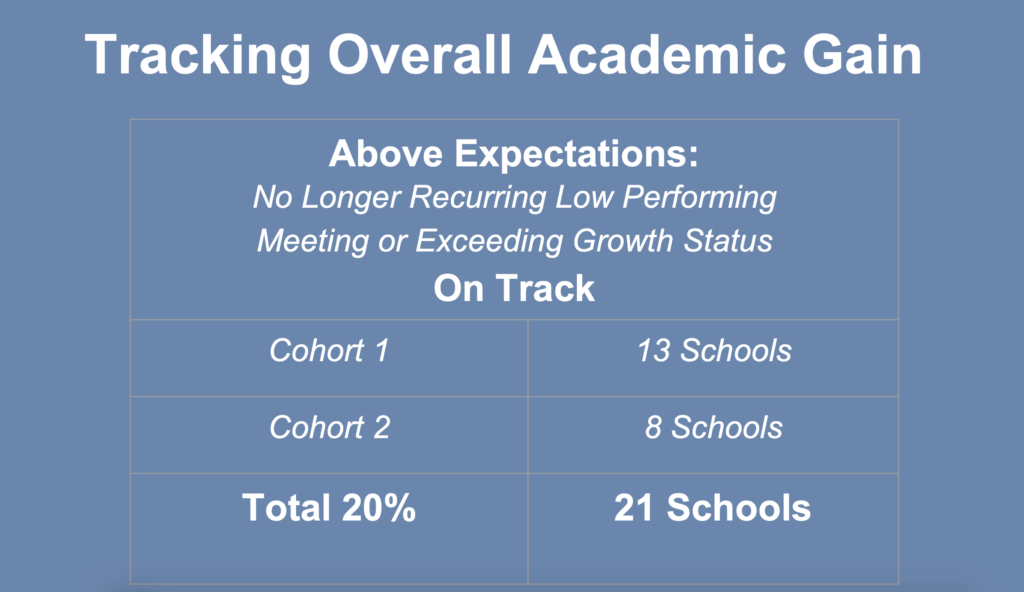

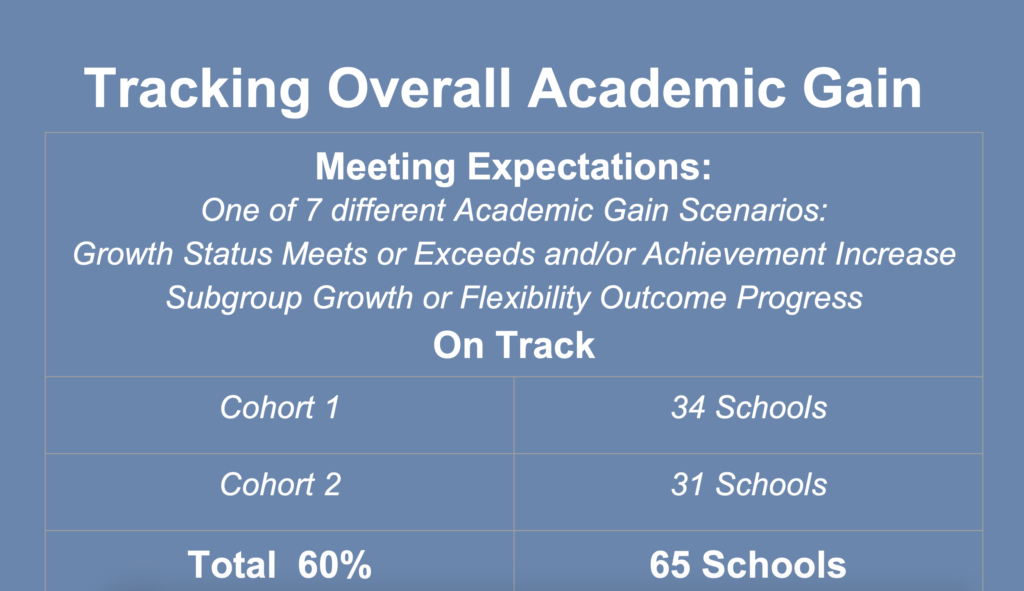

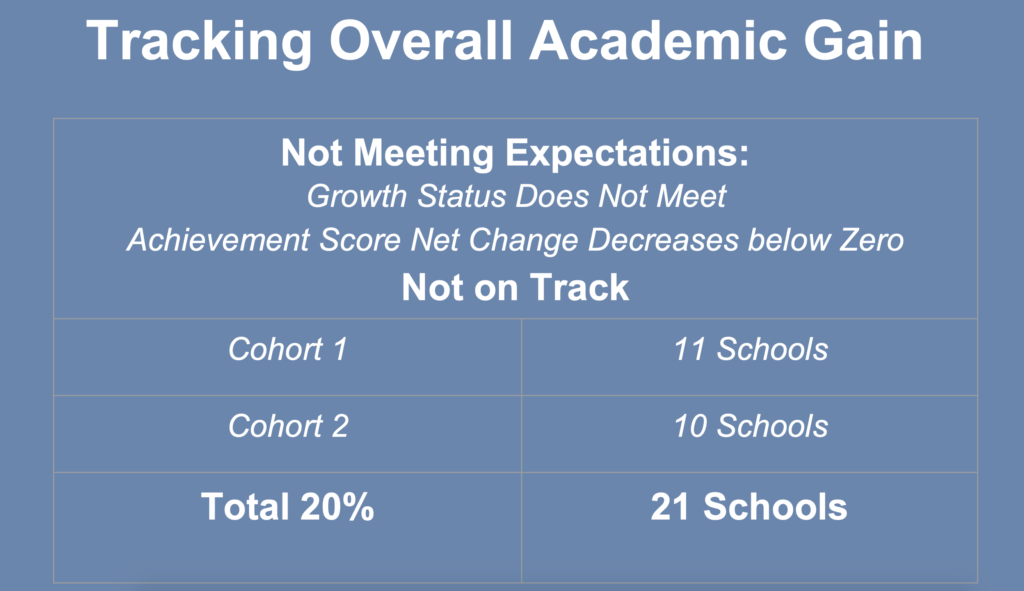

The report also broke down some of the specific components that go into whether or not these schools are meeting expectations, including recurring low-performing status, growth status, achievement score, flexibility outcomes, and subgroup growth status.
Overall, 25 of the 107 restart schools have moved out of recurring low-performing status, 67 exceed or meet growth, 91 had half or more of their student subgroups meeting or exceeding academic growth, and 69 showed some increase in their academic achievement score.
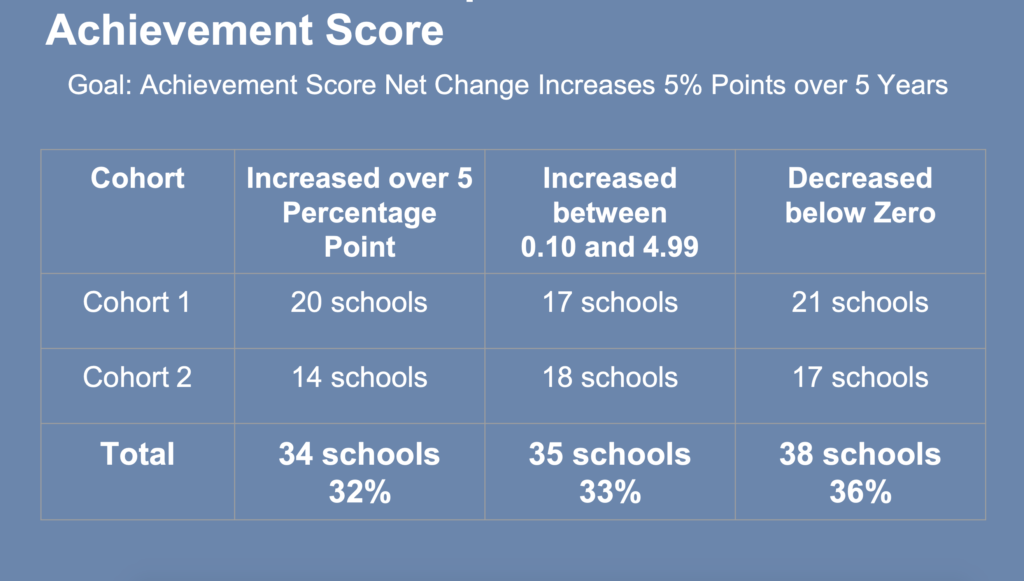

Eighty-three schools are meeting the goal of having at least 50% of their individual flexibility outcomes demonstrate progress.
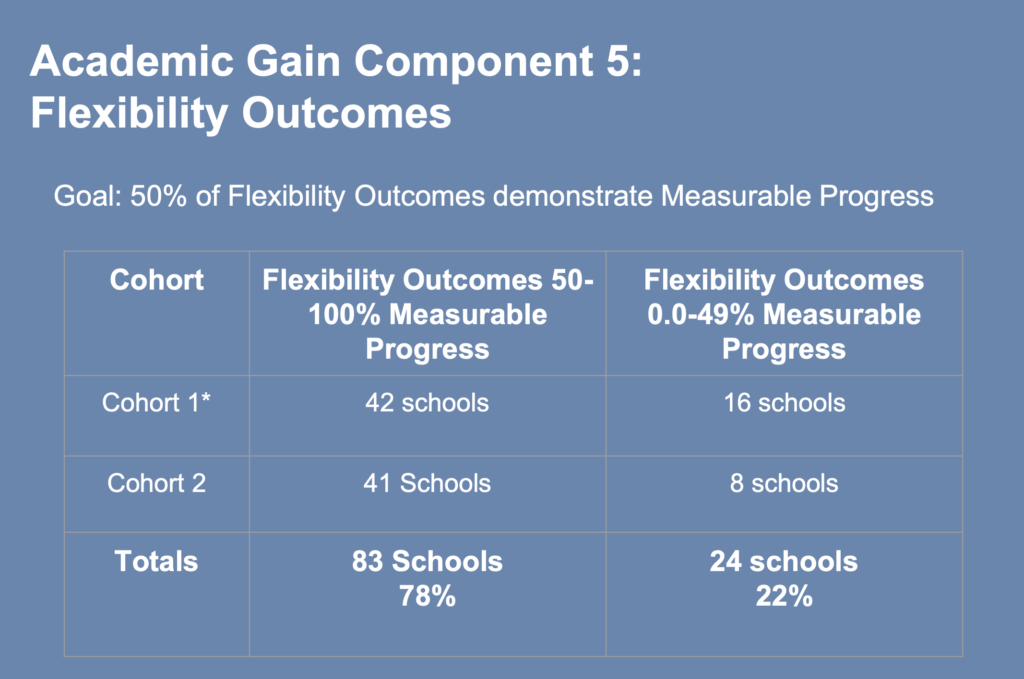

The report also delved into the flexibilities used by the various schools.
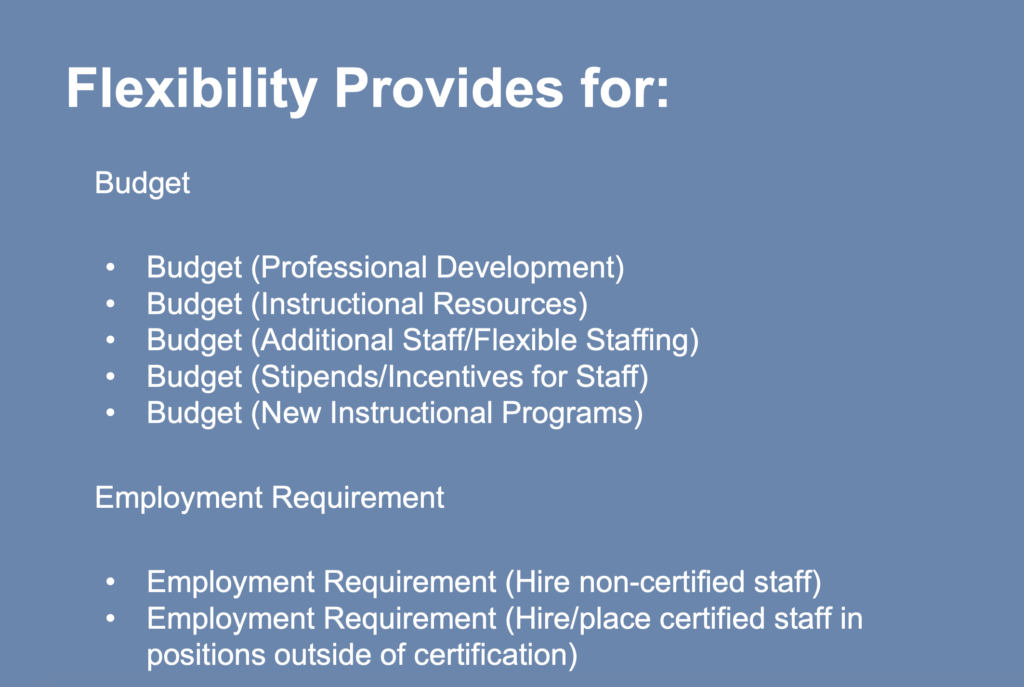



By far, the largest flexibility being used is budgetary.
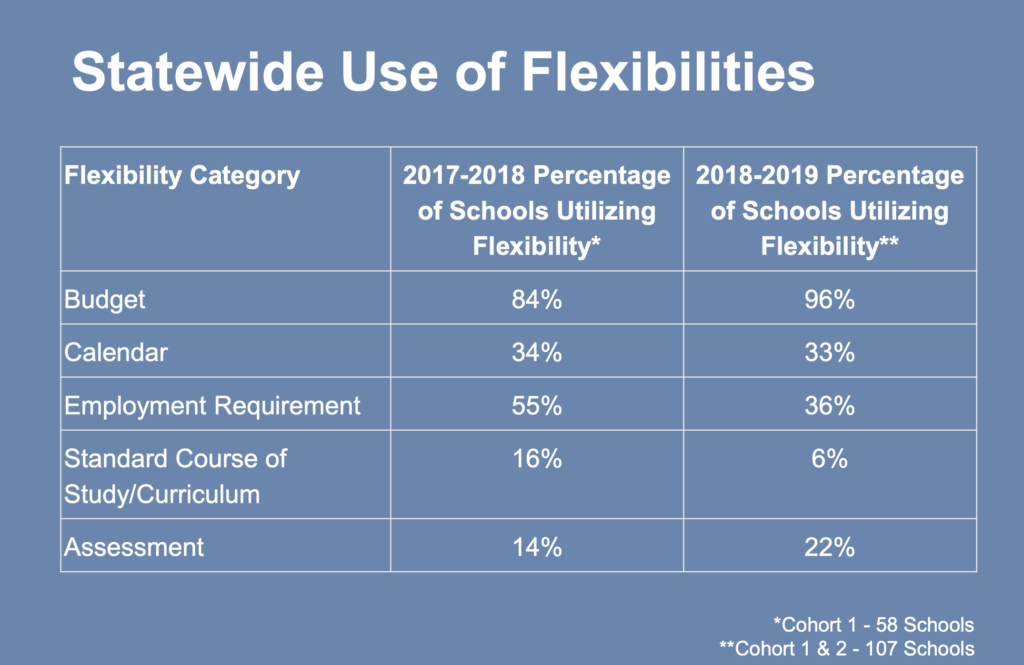

And the report broke down the flexibility progress by category.
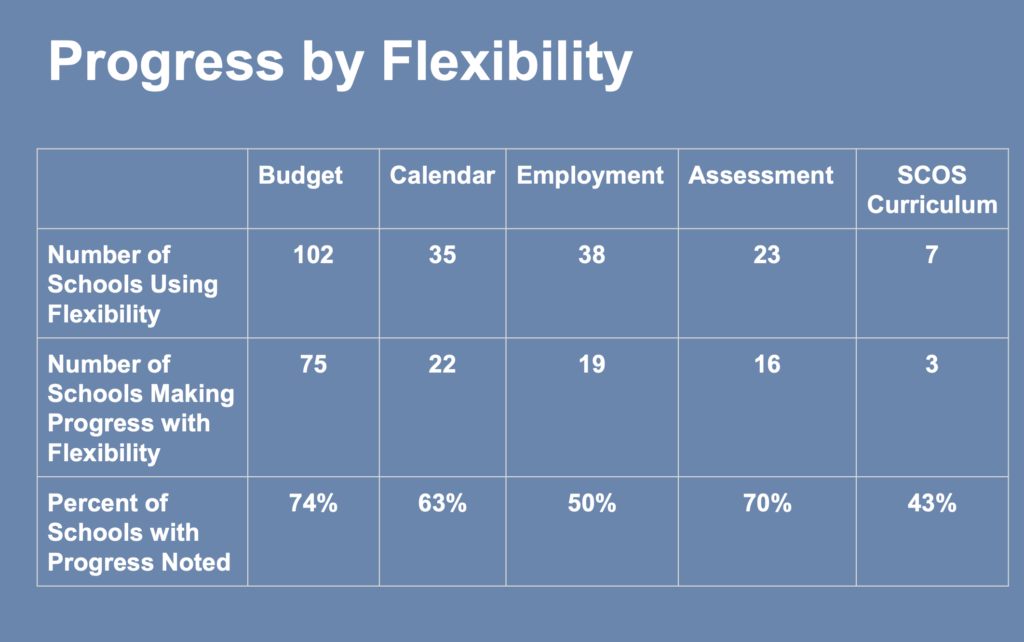

State Board member Jill Camnitz said that there are some clear implications that can be drawn from the data.
“I know we can’t point to just any one factor in school improvement, but it’s hard not to conclude that flexibility is important,” she said.
Below is the full restart presentation.
School safety app
During a discussion on school safety, the State Board heard about mental health impacts pre- and post-COVID-19, and how the state’s Say Something anonymous reporting app has helped students.
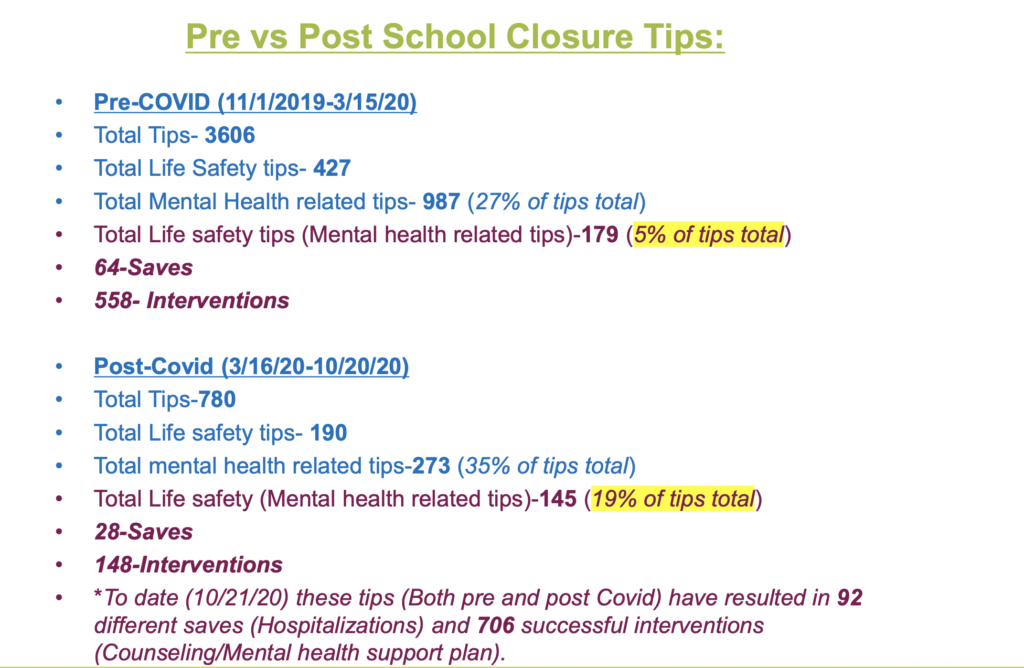

Mike Anderson, project coordinator for the Say Something Anonymous Reporting System, said the app is clearly effective.
“You can see that this program works,” he said. “It is saving lives.”
Joe Maimone, director of the Center for Safer Schools at DPI, said the app’s information was a silver lining to 2020.
“This is one small glimmer of light in a dark and gloomy year,” he said.
The top five types of tips reported on the app were the following, according to the presentation:
- Bullying – 732 – 17%
- Cutting/Self Harm – 537 – 12%
- Suicide – 373 – 8%
- Depression – 365 – 8%
- Drug Use – 264 – 6%
Below is the full mental health presentation:
COVID-19 update
The State Board also heard an update on COVID-19 from state Department of Health and Human Services staff.
DHHS staff said that schools are not a big source of COVID-19 spread. They also reported data on K-12 clusters, which you can see below.
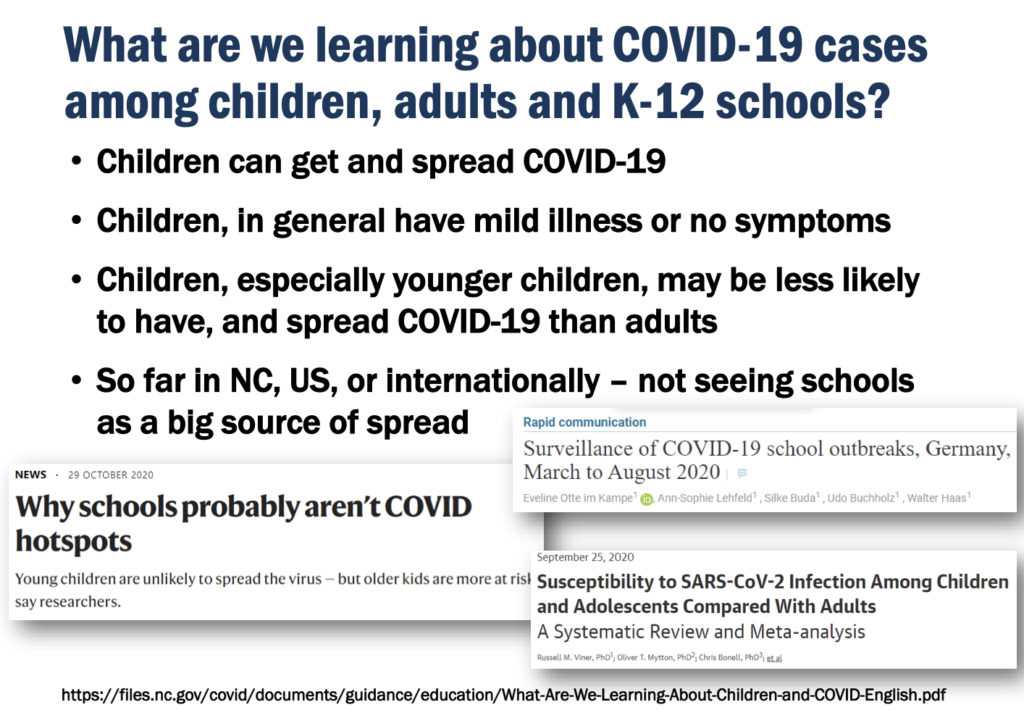

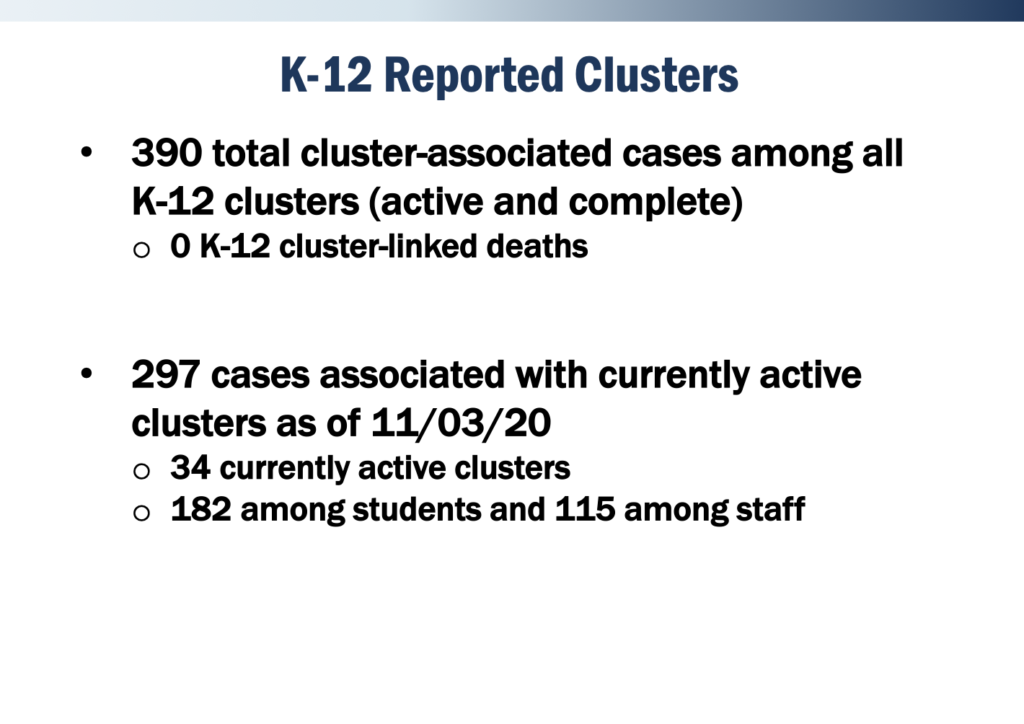

Below is the full presentation.
Advanced teaching roles pilot
The State Board heard an assessment of year three of the advanced teaching roles pilot program, a pilot that started in 2016 which BEST NC describes as: “Empowering North Carolina districts and educators to design new teaching roles that provide advancement opportunities, improved professional development, and greater support for student achievement.”
The report, which encapsulates the assessment, was formed using information including surveys, focus groups, interviews, and administrative data. According to the presentation, 83% of administrators surveyed said advanced teaching roles improved instruction quality.
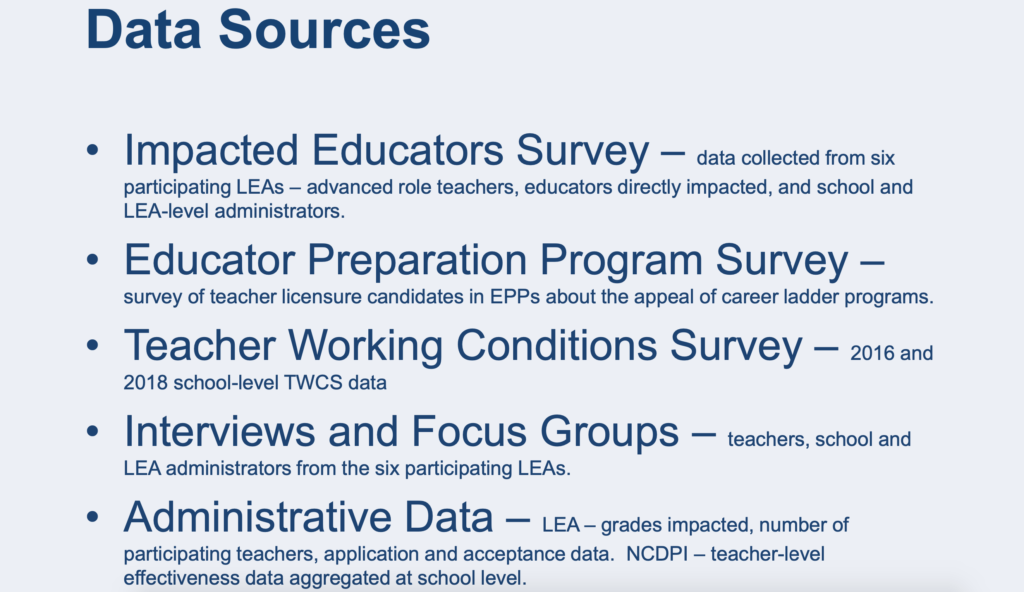

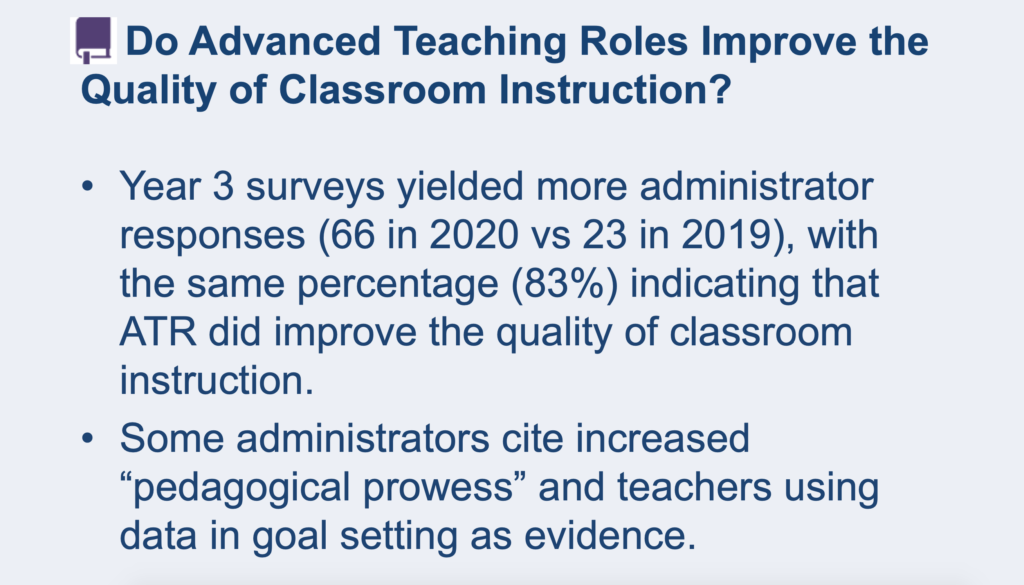

According to the presentation, 79% of teachers surveyed “strongly agreed or agreed” that the supplemental pay in the program was good enough. But that is a drop off from 92% in the second year of the program. The presentation also stated that “a greater number of teachers (47.9% vs 19.5%, n=338) found the opportunity to support other teachers more important than salary differentials.”
Eighty-two percent of surveyed teachers said that the program makes staying in the classroom more attractive, though the number of administrators that felt the same way went from 96% in year two to 83% in year three, according to the presentation.
The State Board saw a comparison of school performance between schools with advanced teaching roles and those without.
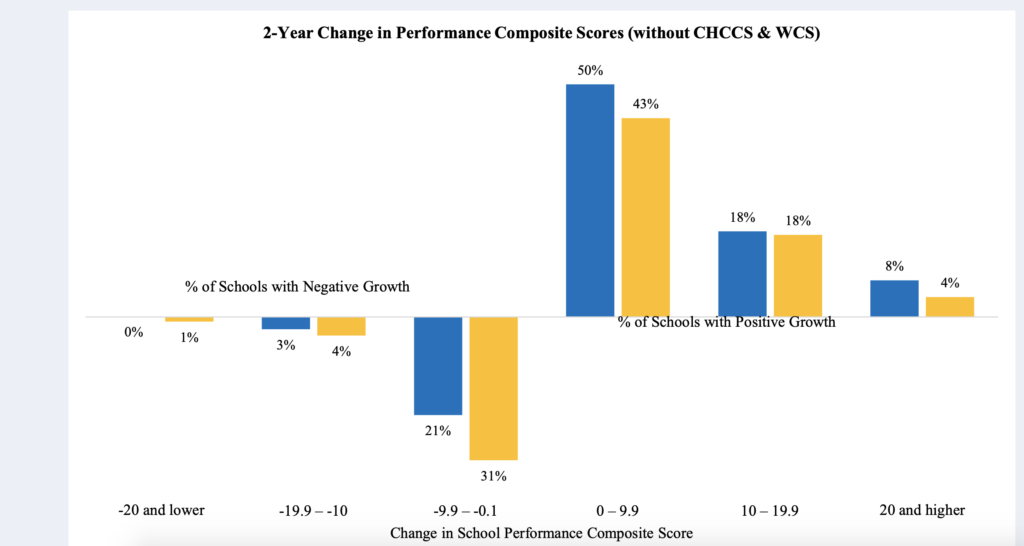

The presentation also included closing thoughts from the author, Trip Stallings, who previously did a lot of evaluation work for DPI in his position at the Friday Institute for Educational Innovation.
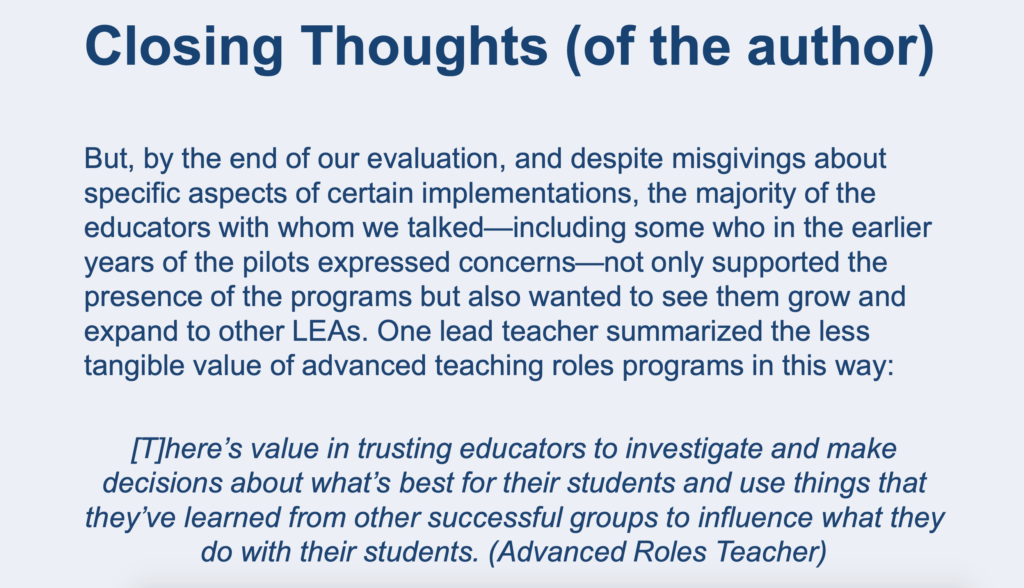

NC Education Corps
On Nov. 2, the State Board of Education Executive Committee met virtually and voted to approve 17 Tier 1 and 2 school districts in North Carolina for the inaugural cohort of the NC Education Corps. The Corps would recruit people from communities around the state and train them to help school districts in a variety of capacities including tutoring, mentoring, and more.
Here are the 17 school districts:
1. Ashe County Schools
2. Camden County Schools
3. Clinton City Schools
4. Cumberland County Schools
5. Elizabeth City-Pasquotank Schools
6. Halifax County Schools
7. Hickory City Schools
8. Jones County Schools
9. Lexington City Schools
10. Mount Airy City Schools
11. Newton-Conover City Schools
12. Perquimans County Schools
13. Person County Schools
14. Pitt County Schools
15. Stanly County Schools
16. Vance County Schools
17. Winston-Salem/Forsyth County Schools
During the State Board meeting Thursday, Board Chair Eric Davis said that a little more than 100 corps members will be recruited in this first cohort and will go to work later this year.
Wake and Durham Counties have also applied to be part of the second cohort of the NC Education Corps, which would likely double the size of the corps in the state. The State Board Executive Committee will vote on those applications next week, Davis said.
The NC Education Corps website is also now live. Districts can go there to apply.
